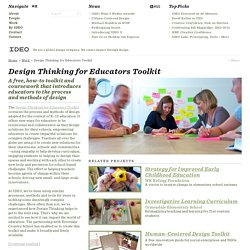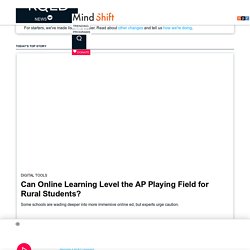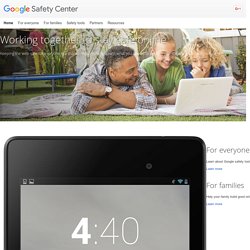

Training, Tools and Personalization - Flipping Instruction for Elementary Ed. TIE CO 13: Shared Notes (Please feel free to share) TRMS Bond Classroom Renovation Overview. 2013 TIE STEM Design Lab Presentation. STEM Concept Map.
Teachers' Domain: Home. Reviews and Ratings for Family Movies, TV Shows, Websites, Video Games, Books and Music. Online Resources. Leading a Learning Organization « Thoughts are Free. Presentation Remote. Read these! Blended Learning. Revolutionizing Education - Project RED. EdSurge : The Best in Education Technology.
Learning Is Change. Gaggle. Design Thinking for Educators Toolkit. The Design Thinking for Educators Toolkit contains the process and methods of design adapted for the context of K–12 education.

It offers new ways for educators to be intentional and collaborative as they design solutions for their schools, empowering educators to create impactful solutions for complex challenges. Teachers all over the globe are using it to create new solutions for their classrooms, schools and communities—using empathy to help develop curriculum, engaging students in helping to design their spaces and working with each other to create new tools and processes for school-based challenges. The effort is helping teachers become agents of change within their schools, driving new small- and large-scale innovations. At IDEO, we’ve been using similar processes, methods and tools for years in tackling some dauntingly complex challenges.
More often than not, we’ve experienced how Design Thinking helps to get to the next step. LPS Tech Updates. Colorado's comprehensive site for education news and analysis. Education Blogs: Teach100. The web resource by teachers, for teachers. MindShift. MindShift explores the future of learning in all its dimensions.

We examine how learning is being impacted by technology, discoveries about how the brain works, poverty and inequities, social and emotional practices, assessments, digital games, design thinking and music, among many other topics. We look at how learning is evolving in the classroom and beyond.We also revisit old ideas that have come full circle in the era of the over scheduled child, such as unschooling, tinkering, playing in the woods, mindfulness, inquiry-based learning and student motivation. We report on shifts in how educators practice their craft as they apply innovative ideas to help students learn, while meeting the rigorous demands of their standards and curriculum. MindShift has a unique audience of educators, tinkerers, policy makers and life-long learners who engage in meaningful dialogue with one another on our sites.
Contact the us by email. Videos, Common Core Resources And Lesson Plans For Teachers: Teaching Channel. AirServer - The game console for Mac/PC has arrived. Good to Know – Google. If you’re the tablet owner, touch Settings → Users → Add user or profile.

Touch Restricted profile → New profile, then name the profile. Use the ON/OFF switches and settings to manage access to features, settings, and apps. Press the Power button to return to the lock screen, then touch the new profile icon. Once it's all set up, the Home screen is empty. Touch the All Apps icon to get started with the new profile. Killing the FUD & dispelling the myths around GAFE. For Schools. Cultural Institute. Overview of Google Apps Admin Console. EducationOnAir. Classroom 2.0.
Genius Hour - Where Passions Come Alive. Ken Robinson says schools kill creativity. RSA Animate - Changing Education Paradigms. Fixed Mindset vs. Growth Mindset: Which One Are You? Here is an excerpt from an article about Carol Dweck, a professor of psychology at Stanford University: Through more than three decades of systematic research, [Carol Dweck] has been figuring out answers to why some people achieve their potential while equally talented others don’t—why some become Muhammad Ali and others Mike Tyson.
The key, she found, isn’t ability; it’s whether you look at ability as something inherent that needs to be demonstrated or as something that can be developed. To anyone who is into personal growth and self-improvement, this seems obvious. But clearly, it is not obvious to everybody: look at this diagram by Nigel Holmes representing the two types of mindsets and I’ll sure you’ll recognize the attitudes of many people you know. Fixed Mindset Let’s have a look, starting with the Fixed Mindset side: People who hold these beliefs think that “they are the way they are”, but that doesn’t mean that they have less of a desire for a positive self-image than anyone else.